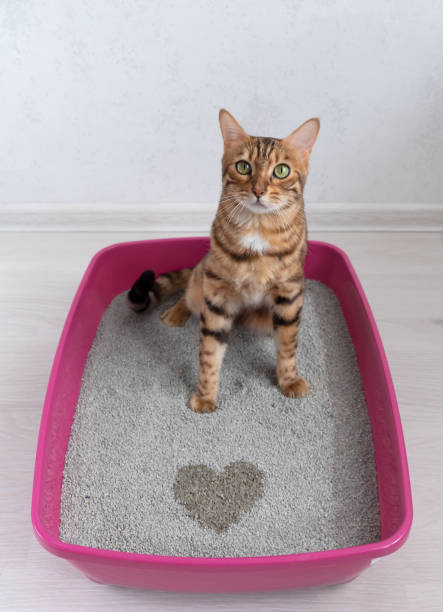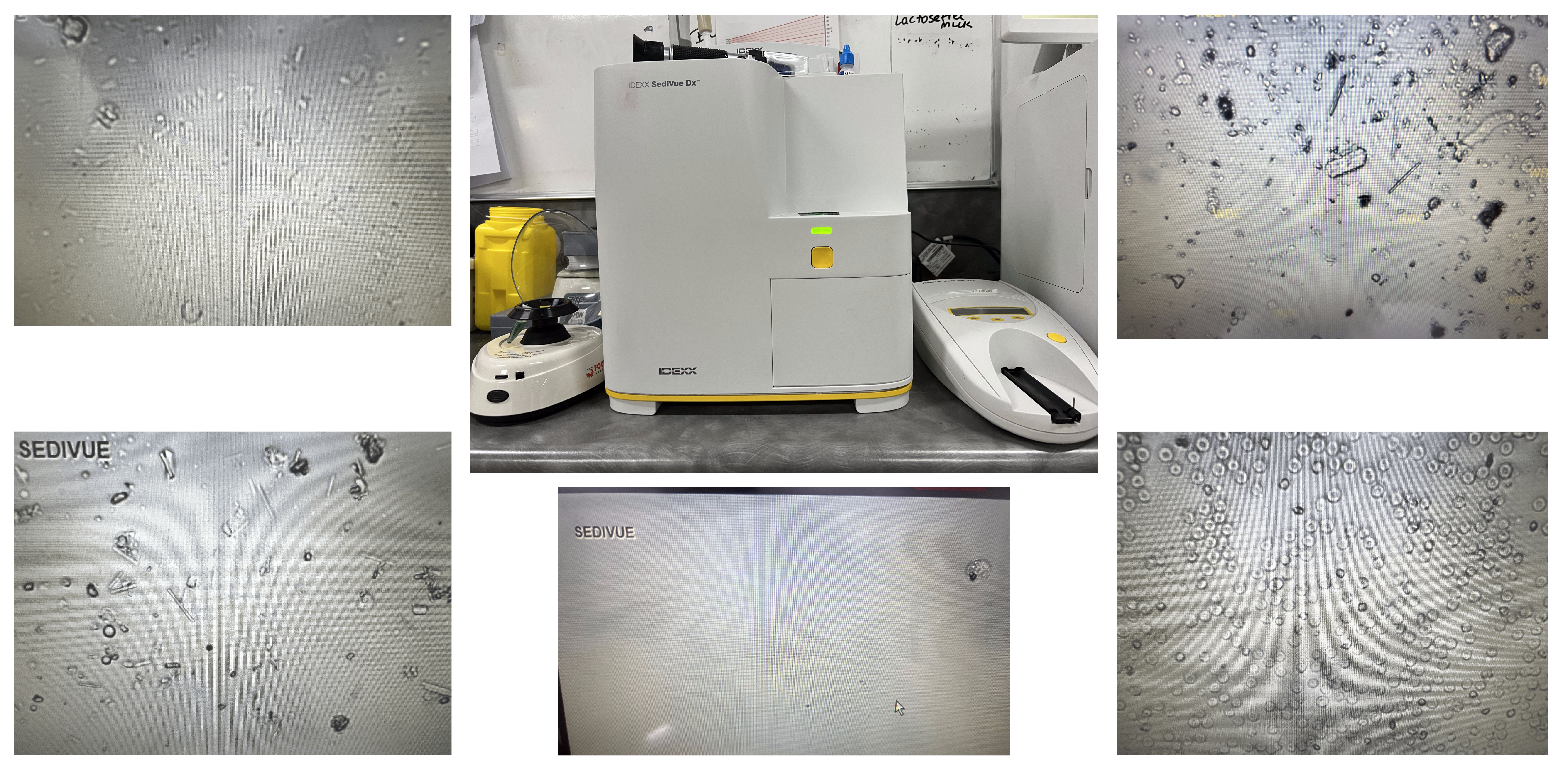Unusual urination behaviours can be a tricky issue, especially when our pets start bedwetting or peeing on our favourite (and often expensive – as luck would have it) furniture! This means we often need to conduct a bit of an investigation to figure out why it’s happening.
In 2021 Direct Vets invested heavily in the latest and greatest in-house lab equipment, enabling us to provide more timely diagnostics and treatment plans. This month let’s look at the in-house Urine Analysis suite:
Where to start when investigating a urine problem
A clinical examination and a thorough review of patient history is a standard approach, but this may only point us in a general direction. Increased thirst, increased urination (volume and/or frequency), straining, bedwetting, and increased odour, for example, can all be clinical indicators of an underlying disease. However, none are clinical indicators of a specific problem, so we will often need to look further, and this may include blood tests, X-rays, ultrasounds, and testing a urine sample.
Issues with the bladder, kidneys, prostate (in males), uterus (in intact females) and the endocrine (or internal hormone system), and even stress-related behaviors can be some of the causes for changes in thirst/drinking or urinary habits.

So, what do we look for when we examine urine?
First, we assess the appearance: What does it look like? What is the color? Is it clear or cloudy? We look at the concentration using a refractometer. This will tell us if the pet is drinking enough if it is drinking too much, if the kidneys are working and concentrating the urine, or if it is a process in the body that is actively diluting the urine. On its own, it is only an indication of kidney function so we must combine this process with other tests to determine the big WHY.
We can then use a specialised test strip to measure the presence of white blood cells, red blood cells, protein, glucose, liver byproducts, and pH levels in the urine. These strips have been around for a long time and were originally designed for testing human urine, so the ranges and indicators are not always ideal for what we need. They also require the user to interpret a colour change on the indicator strip within a certain time. More recently, however, animal-specific strips and a specialised piece of equipment have been developed to take the guesswork out of reading the strips, providing more accurate results. This increases accuracy in predicting active bleeding, infection, inflammation, diabetes, kidney failure, and other diseases when combined with assessing the physical appearance of the urine.
What can we see when we look at urine?
The third piece of the investigation puzzle is provided by Sediview equipment. This replaces in many instances the need for a microscope, as it can isolate particular features of the urine and allow us to have a magnified (x100) look at the sample. We can see crystals (which can lead to the formation of stones and blockages, especially in male animals), bacteria, white blood cells, red blood cells, bladder lining cells, tumor cells, casts (from protein leaking from damaged tubules within the kidney) and sperm in males.
How does this help us find a diagnosis?
Certain diseases will have one or more of these things present and the pattern of changes we see, as well as combining the results, helps us narrow the list of possible diseases. We may need to further compare the findings with blood tests in certain cases to isolate whether the kidney, bladder, or other systems are involved.
For example, we may have elevated pH, white and red blood cells, and bacteria in the urine indicating an infection. But what if we also have glucose in the urine? This can be an indication of diabetes and is the main issue, with the infection being a secondary problem brought on by the glucose in the urine. Often there is more than one disease process at play and a thorough investigation is crucial in uncovering the root cause.

The bonus for our clients!
Having an in-house capability, that can process samples in as little as 30 minutes is the gold that this new equipment brings. In the past, we often needed to send the samples to the lab with delays of a day or more! Less stress and worry for all!
Once we have identified the disease and decided on a treatment plan it is often important to perform a follow-up test to confirm that the problem is sorted or if additional diagnostics or treatment is required. This will mean a follow-up sample is likely to be requested at the end of the treatment course, or if the disease is an ongoing one, will allow us to monitor our treatment plan and tweak it as required.
Check out the photos below for some of the cool things we see:

If you have any concerns that your pet please book in for a consultation either online or by calling our awesome reception team on 9369-1822

